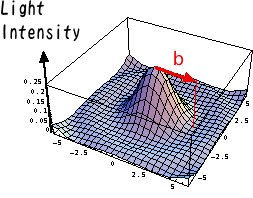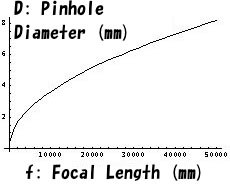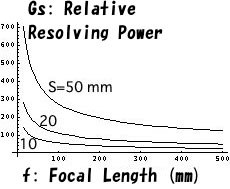Atelier Bonryu(E)
pinhole photography


Atelier Bonryu(E)
pinhole photography


Laboratory: Pinhole Photography
Taking Pinhole Photographs - Remark
Remark#5: Resolving Power of Pinhole Photography
In the Remark#4 we derived the optimum diameter of a pinhole for the given focal length and the given wavelength of the light. Then how much resolving power is attained by such an optimized “pinhole lens”? In other words, how small sunspot can be recognized when one observes sunspots by using the optimized “pinhole lens”?



<=Fig.1
An image of a point source is a circle with a radius b on the focal plane. Concentric zones of weak light intensity are seen around the circle.
Fig.2 =>
A 3 dimensional schematic figure of the light intensity distribution.

If images of two point sources keep away by d and the distance d is smaller than the above-mentioned radius b (d<b), it is impossible to distinguish these two images (Fig.3). Contrary for d>b two images are distinguishable (Fig.4). Therefore, it is appropriate to consider the distance d as the limit of the resolving power. In a case of a telescope, b/f is the definition of the resolving power.


<=Fig.3
Images of two point sources placed aloof by d(<b) are not distinguishable.
Fig.4=>
Images of two point sources placed aloof by d (>b) are distinguishable.



















Fig.5: Pinhole diameter versus focal length
Fig.6: Pinhole diameter versus focal length
Fig.7: Relative resolving power versus focal length for a fixed viewing angle (the Sun).
Fig.8: Resolving power versus focal length for a fixed size of a picture screen.
